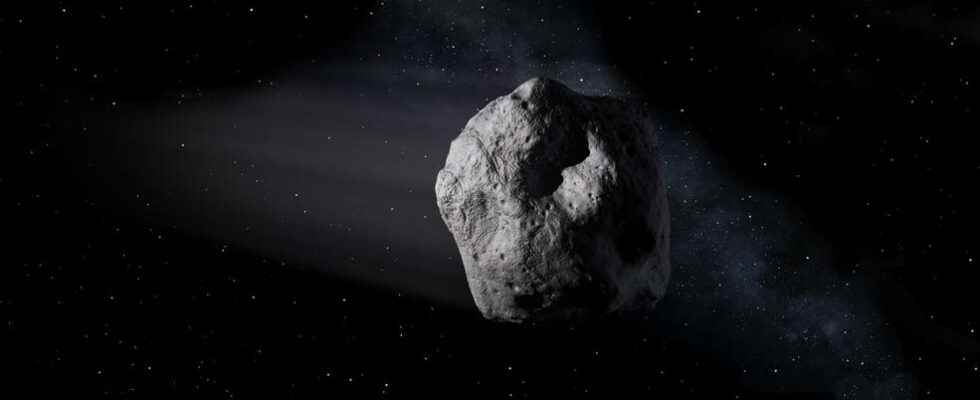Researchers have just discovered the largest potentially dangerous object for Earth in eight years. With a diameter of approximately 1.1 kilometers to 2.3 kilometers, it is classified in the category of “ planet killers “.
Scientists detected the asteroid, dubbed ‘2022 AP7’, through the Dark Energy Camera in Chile which they used to search for objects in the orbits of Earth and Venus. They published the results of their observations in the journal The Astronomical Journal.
Nothing to worry about…
2022 AP7 potentially ranks in the top 5% of the largest known potentially dangerous asteroids. We must nevertheless be reassured, if the object currently crosses Earth’s orbit, this occurs when the Earth is on the other side of the Sun, and this configuration should last for hundreds of years to come.
In the distant future, however, it is possible that 2022 AP7 will collide with Earth: “ Slowly, over time, the asteroid will begin to cross Earth’s orbit closer to where it is, but that will be centuries from now, and we don’t know the orbit of 2022 AP7 with precise enough to say a great deal about its dangers centuries from now. But for now, he stays far away from Earth says Scott Sheppard, an astronomer in the Earth and Planets Laboratory at the Carnegie Institution for Science and lead author of the study.
The impact of such an asteroid would be catastrophic. Dust and pollutants thrown into the atmosphere would stay there for years, blocking sunlight from reaching the planet. The Earth would cool considerably. ” It would be a mass extinction event the likes of which have not been seen on Earth in millions of years. », continues the astronomer.
A very difficult area to observe
The reason scientists failed to detect 2022 AP7 earlier is because it is hiding inside the orbits of Earth and Venus. It is indeed an area known to be difficult for observations because of the brilliance of the Sun. Scott Sheppard’s team also believes that there are still a few asteroids of similar size to be detected. ” To date, we believe there are approximately 1,000 NEOs larger than 1 kilometer in size “says the scientist, adding that researchers have discovered about 95% of them in the last decade.
As a reminder, humanity is preparing for the possibility of such an object crossing the path of Earth. Last month, NASA managed to deviate the orbit of a small asteroid thanks to its DART probe; it was the first planetary defense mission conducted by the US space agency.
Sources: sky news, EuroNews, The Astronomical Journal

0